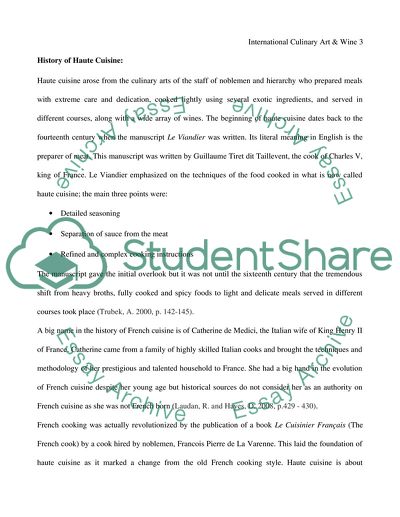Cite this document
(History and Characteristics of the Haute Cuisine Assignment, n.d.)
History and Characteristics of the Haute Cuisine Assignment. Retrieved from https://studentshare.org/history/1771658-international-culinary-art-wine
History and Characteristics of the Haute Cuisine Assignment. Retrieved from https://studentshare.org/history/1771658-international-culinary-art-wine
(History and Characteristics of the Haute Cuisine Assignment)
History and Characteristics of the Haute Cuisine Assignment. https://studentshare.org/history/1771658-international-culinary-art-wine.
History and Characteristics of the Haute Cuisine Assignment. https://studentshare.org/history/1771658-international-culinary-art-wine.
“History and Characteristics of the Haute Cuisine Assignment”, n.d. https://studentshare.org/history/1771658-international-culinary-art-wine.


